Can you handle the toilet paper?
9am on Monday morning and finally on a plane en route to Cape Town, having already forced myself out of bed far too early, braved an icy Highveld winter morning and Fourways traffic (which I sincerely do not miss!), bought a dodgy luminous yellow poppy-seed muffin at Lanseria airport and spilled tea on myself. Twice. Tea in a paper cup is always suspect, as any good Tea Master will tell you. Just don’t do it.
So here’s my confession – I was briefly in Joburg this past weekend, a madcap whirlwind trip to go and see the game at Soccer city Sunday night – a game for which my much younger and much taller baby brother and I bought tickets what feels like ten years ago already! I know this is going to get me into much trouble for not letting everyone know, so I’m just going to start apologizing now and hope that at some stage I’ll be forgiven? Had to be back in CT early enough to do a Value Prop workshop on Monday morning again, so I’m sorry. Again. Really.
The flight was delayed due to what sounds like a comedy of errors on the part of complicit weather forecasters (what a surprise that they should be wrong), pilots, air traffic control and some really unhelpful FIFA regulations regarding air travel during the World Cup. It really does get it’s fingers in everywhere when you’re not looking.
And so I’ve succumbed as well – it would seem inappropriate and disrespectful not to write something about the most covered story on the planet right now (BP notwithstanding) and especially since the Barefoot Mountain guide and I joined aforementioned much younger and much taller baby brother for a pilgrimage to Soccer City last night to watch Argentina spin and flit around the Mexicans while Maradonna looked for hugs. Every time I spotted him he was either prancing around next to the field (mostly outside of his little Coaches box, much to the chagrin of the security guy assigned to keep him in it, as it were), or finding someone to hug.
Maybe it’s a South American thing, and maybe he’s just a warm fuzzy type but he really likes his hugs. Before the game he was swanning around in a tracksuit on the field, hugging each player in between warm-up exercises and then basking in some early fan glory as the swelling crowd cheered and waved when he looked their way (they really do love him!), or interrupting the nearest TV interviewer mid-sentence for a hug and a chat – he is Maradonna, after all, of course they want to talk to him! He was loving every second of it, the constant grin and hugs gave it away.
And of course once his team started scoring their beautiful goals, he was in heaven. For such a little man, he has quite a presence – even in the impressive arena of an almost full Soccer City (87 358 spectators, more or less).
As a bit of a soccer novice (ok, most sport really – I only get the very basics of most of them and only really know what’s going on when the TV commentators explain it to me!) I have to admit to only being really sure what was going on when they scored a goal. That’s when the ball goes over the line and into the net, then you get one point. Or not – if you’re England. But that’s a whole different can of worms, and I’ll leave that and the sure to be long & tedious post analysis and arguments about electronic support for referees to the professionals.
So while I do appreciate the art and skill of getting the ball, keeping it and passing it to your team-mates with flare, I also spent quite a lot of time watching all the other fascinating things that happen such an event.
Now normally when doing a post-mortem on any event including tens of thousands of people and a stadium of any kind, two issues would arise in conversations. First, the high price of beer, and second the lack of toilet facilities. On the first I am told that while the prices were high (R15 a Coke, R30 a Bud), they were ok. But on the second point I can only praise the creators of Soccer City – the logistics of thousands of people needing to pee were extremely well thought out and around just about every corner there were loos – lots of them, and they worked. Not once did I stand in a queue for the toilet – an unheard of thing in the lore of ladies toilets
Having attended one game during the Confed Cup last year, I was also amazed at how well you could see the game from just about anywhere in Soccer City – so much better than Ellis Park which just goes to show that we seem to have learnt something in the field of architecture in the last 50 years or so. Good work team.
Security getting in was quick & tight – not a single queue again – and getting out was smooth. Security and match staff in their bright yellow, orange and sometimes green jackets were another fascination for me. All you had to do to follow the trouble-spots in the stadium was keep track of where the luminous jackets were congregating at any one time.
Such as when Argentina kicked the ball out of bounds, over the railing and into the pulsing mass of die-hard blue & white fans on the first tier near the goal box in the first half. They rejoiced at getting the ball, bandied it about a bit while jumping and flagging and singing like crazy and then the ball disappeared. Much to the annoyance of the staff trying to get it back down to the field, and much to the delight of the rest of the crowd. A little knot of yellow jackets soon appeared at the end of the row in question, and just when it seemed likely that the ball would be revoked from the fans, it was thrown across to the opposite end of the block to much cheering, and a game of cat and mouse ensued with the yellow jackets to-ing and fro-ing as fast as they were able through the blue masses only to be flummoxed at the last second as the ball was passed on again. Eventually I think the supporters took pity on the officials and the ball was tossed down to them at the railing next to the field where they were forlornly watching the game aside a game. Very funny if you happened not to be wearing a bright yellow and orange jacket.
Another unusual activity the yellow clad officials had to indulge in quite often during the game was the gathering of the toilet paper. And surprisingly it has nothing to do with the bathroom system at all, in fact I’m told by the much younger and much taller brother that it’s a South American thing. Right from the start, well before the players were even warming up on the field (but with much more fervour later once they were practicing and also while the game was in full swing), there would often be either a lone white streamer or a whole flotilla of them streaking through the air, over the security barriers, over the security staff, over the bank of hunched up photographers, and over the goal line and sometimes even over the goal net itself to land with much aplomb and decorativeness on the field of play. And while they actually are quite lovely in flight and look very celebratory, the material involved is just a normal, standard issue roll of toilet paper. Single or double-ply, I’m not sure, but it was the seemingly tricky task of the yellow-jackets to gather up and dispose of in huge bins the toilet paper. And it also seemed to delight the paper throwers to wait until the very last streamer had been cleared away before firing off the next volley, at one point papering a photographer setting up his camera behind the goal net in the process, to much accompanying tittering. And much resignation on the part of the yellow-jackets as well as the tall director of yellow-jackets who was himself wearing a far more suave knee-length black trench coat and running elegantly across the pitch before the game and at half time, talking seriously into his walkie-talkie and directing the stream of yellow jackets in his wake.
Interestingly, I have not noticed this toilet-papering frenzy at any of the games I’ve watched on TV or streaming media so far (and I have surprisingly watched quite a few of them), which made me wonder whether this was the first instance of the toilet paper at our World Cup, or whether FIFA had been managing the coverage and it simply wasn’t being shown to the vast majority of viewers around the world.
And, as you have come to expect by now, this made me think about the way FIFA manages it’s brand. Personally I think they have established a brand equity as the global mafia of soccer, but I’m sure Mr Blatter would disagree. Certainly their very entertaining and counter-productive strong-arm tactics around apparent ambush marketing by beer brand Bavaria1 as well as their martial law approach to taking over stadiums and having everything their way no matter what, would support this image. But in terms of brand recognition, brand clarity and brand cohesion, I think few would disagree that they certainly do know how to hold it together.
So unexpected as this is – to me as much as it may be to you – my list this month is all around brand lessons (some good, some bad) to be learnt from FIFA:
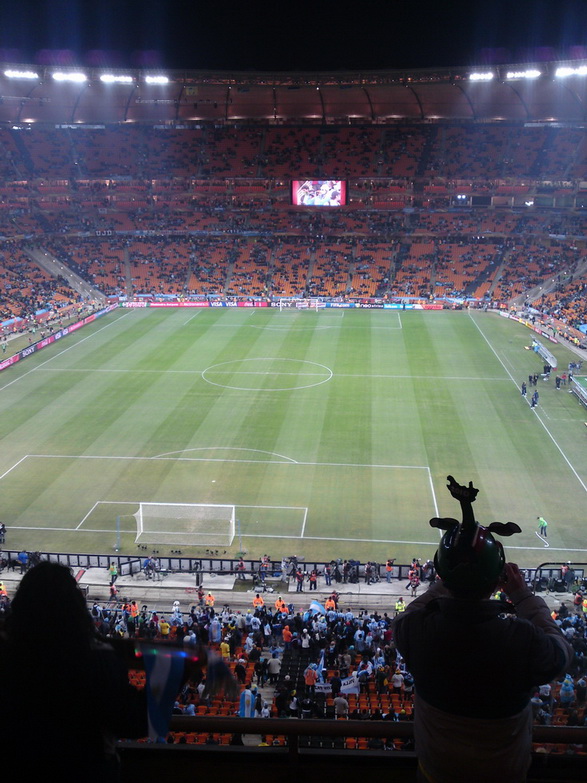 1. Be really, really clear about what you stand for and then stand for it for a long time. If you ask any average person – the newspaper guy on Nicol and Leslie; the shop assistant at Jo Malone in Hyde Park; the flower sellers in Plein Street; absolutely any school kid in the country and all their local equivalents all around the world what “FIFA” is, they’ll tell you soccer (ok, some will say football, but you know what I mean). And that is as clear as it gets.
1. Be really, really clear about what you stand for and then stand for it for a long time. If you ask any average person – the newspaper guy on Nicol and Leslie; the shop assistant at Jo Malone in Hyde Park; the flower sellers in Plein Street; absolutely any school kid in the country and all their local equivalents all around the world what “FIFA” is, they’ll tell you soccer (ok, some will say football, but you know what I mean). And that is as clear as it gets.
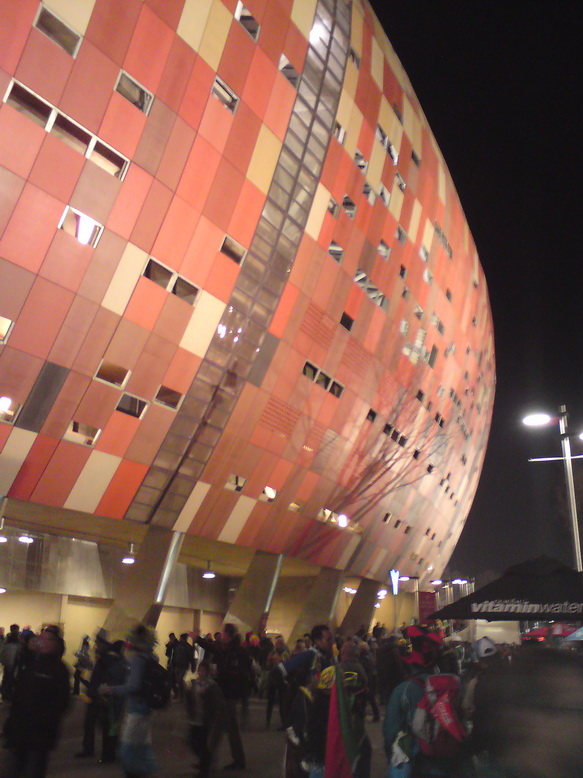 2. Be really, really choosey about the places you put your brand. FIFA and possibly the Olympic Organising Committee must be the most sought after event planners in the world. Which other events companies do you know of who are clamoured around, pampered, beseeched and even begged for the privilege of being their host country? Do you remember the excitement in SA when we won the bid? Excitement unmatched by the financial and logistical issues that come with the hosting, but that didn’t even feature relative to the joy that followed that little white envelope. And that’s what we all want for our brands isn’t it? To be courted and flaunted like FIFA means you have the choice as to where you put your brand, and how it is treated, and not the more standard situation where you are at the mercy of third parties (often retailers of one form or another). What a goal. And if you get there, tell me how!
2. Be really, really choosey about the places you put your brand. FIFA and possibly the Olympic Organising Committee must be the most sought after event planners in the world. Which other events companies do you know of who are clamoured around, pampered, beseeched and even begged for the privilege of being their host country? Do you remember the excitement in SA when we won the bid? Excitement unmatched by the financial and logistical issues that come with the hosting, but that didn’t even feature relative to the joy that followed that little white envelope. And that’s what we all want for our brands isn’t it? To be courted and flaunted like FIFA means you have the choice as to where you put your brand, and how it is treated, and not the more standard situation where you are at the mercy of third parties (often retailers of one form or another). What a goal. And if you get there, tell me how!
But more practically, the lesson can also be applied to the rest of us mere mortals in this way: be really clear who you want to get to and where they are most effectively to be reached (though not always the same as most easily, I’m afraid) , and then make active, informed decisions as to where you would ideally like your brand to be found by them and work at getting it there. It doesn’t help being in all the usual places if the consumers you’re looking for don’t hang out there. Fish where the fish are, and try to be where you really want to be, not where you happen to end up.
3. Be really, really choosey about the people you hang with. And make it worthwhile – for you and for them. Now let me be 100% transparent here – I am not a fan of sponsorships. I firmly believe that the number of instances in which a brand or brand manager can hand-on-heart say that they showed significant & measurable ROI on the full investment of the sponsorship plus the collateral and media to support it, is almost negligible. There are a couple of good articles doing the rounds on World Cup sponsorships2 and they make lots of points I agree with, but one of the most striking things I noticed recently about that list of FIFA World Cup sponsors was simply how long the list was! Never a good starting point for a sponsor….
But I’m not going to tirade about the brazillians3 of dollars / pounds etc spent on these sponsorships, and how utterly wasteful I find the whole thing. Really, I’m not. I’m just going to move swiftly on to figuring out what we can learn here. And I think the trick that FIFA has exploited here is all about their choice of partners. Although I might find the rationales insipid or ridiculous, the brands that are chosen for this elite & expensive FIFA sponsors club are quite impressive. They are all strong in their own right; bring a specific area of expertise and value with them; and will be directly or indirectly help extend the FIFA brand further – either deeper into territories they already know, or into completely new ones that will offer new growth for the mother brand. All of which is really good news for FIFA and some would argue for the sponsors too. And we already know that FIFA protects its sponsors like a lioness with baby lions (I know, they’re called cubs – but I’ve already been chastised on this point for calling calves “baby cows” by a gentleman-farmer-businessman, and so I’ll carry on standing my ground on this point!), So the lesson here is only associate your brand with those brands, customers , suppliers, partners that are genuinely going to add value to your brand and whom you would be proud to be mentioned in a newspaper headline together with. For example, if your brand is all about keeping a cool head and teamwork, France would not be such a fabulous choice of brand partner right now.
4. Keep up with the trends – this time for Africa, next time Brazil. Whether you’re the leader of the pack like Brazil is, or you’re a newby in the game like the Socceroos, you still need to know what the latest rules and discussions and controversies in the marketplace are. So that you’re up to speed for industry conversations, and also so you can take advantage if appropriate. And while I think FIFA is generally pretty well informed, hence their understanding the need to have a World Cup hosted in Africa, I’m also sure that FIFA’s telephones are chock-a-block with irate Englishmen and the topic du jour is that whole video technology thing I alluded to earlier. A topic that FIFA probably should have been a little more “voor op die wa” about. Even the British PM has had his say, for goodness sake, surely they can’t be ignoring it anymore!
5. Know how to deal with the toilet paper. The truth of the matter is that sooner or later every brand is going to be toilet-papered in some way. Brands are public property, and as such they can as easily be attacked as they can be loved. And even though we all like to think that everyone is going to love our brands, there are always going to be detractors. In fact, it’s a sign of a healthy brand that there are both fans and detractors – that means the brand is taking a stand rather than trying to please everyone and ending up tasting like macaroni without the cheese. Bland and pointless. So the bottom line is that we should always be prepared to deal with the toilet paper, and preferably in a constructive way. I may be wrong on this, but it seems to me that FIFA’s toilet paper policy is more “hide and deny” than “listen and learn”. They seem to deal with negative comment, criticism and general outcry in much the same way as they dealt with the toilet paper on the pitch last night: (a) get rid of the evidence as fast as possible; (b) distract the media & point the cameras away from the toilet paper– preferably at the game or something equally positive; and (c) if actually asked directly about it, simply deny that the toilet paper ever existed. There is no evidence after all, it’s all been smuggled out of the stadium in black plastic bin bags. I’m sure I don’t have to connect the dots and tell you that having a really strong, detailed disaster response plan is a good idea for every brand. And if you don’t know how to do this, ask an expert. Just not Mr Blatter right now, I think he may be a little busy for a while.
Foot Notes:
1. For a really interesting article on the history of Ambush marketing have a look at this:
2. For more on the value of World Cup sponsorships this see Chris Moerdyk’s recent article here:
http://www.bizcommunity.com/Article/196/147/49258.html
And also an interesting snippet on this topic from Cream via Bizcommunity here:
http://www.bizcommunity.com/Article/196/147/49104.html
3. A really long, but really fascinating article about the real amounts on money being spent & made:
http://bleacherreport.com/articles/406843-money-makes-the-world-cup-go-round
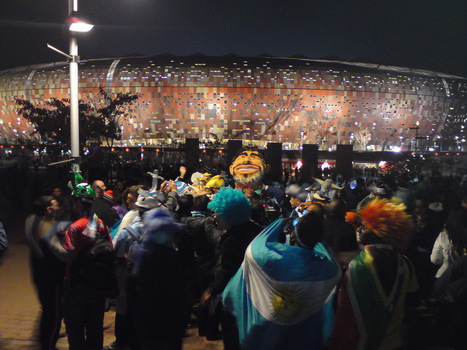
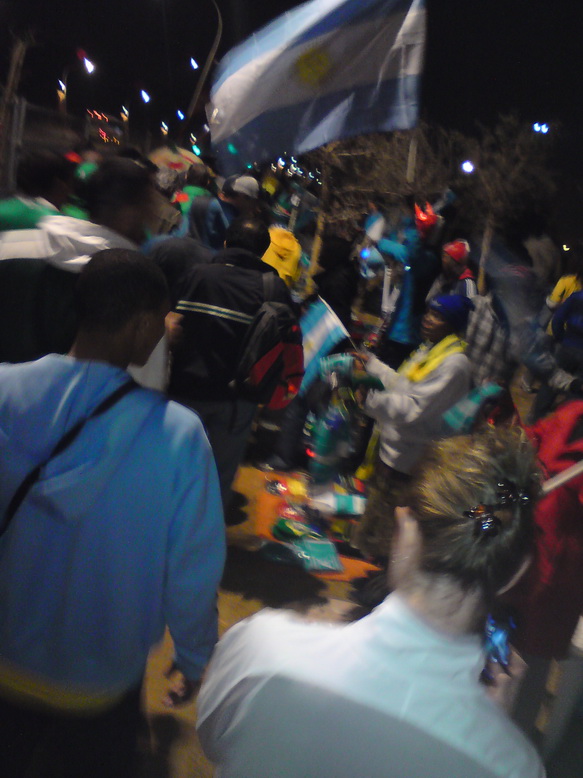
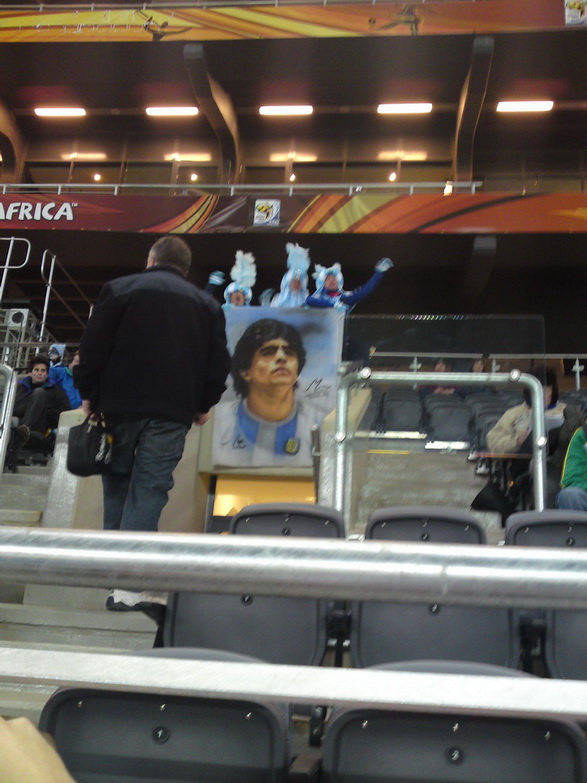
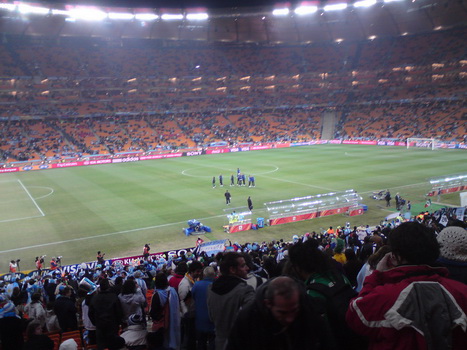
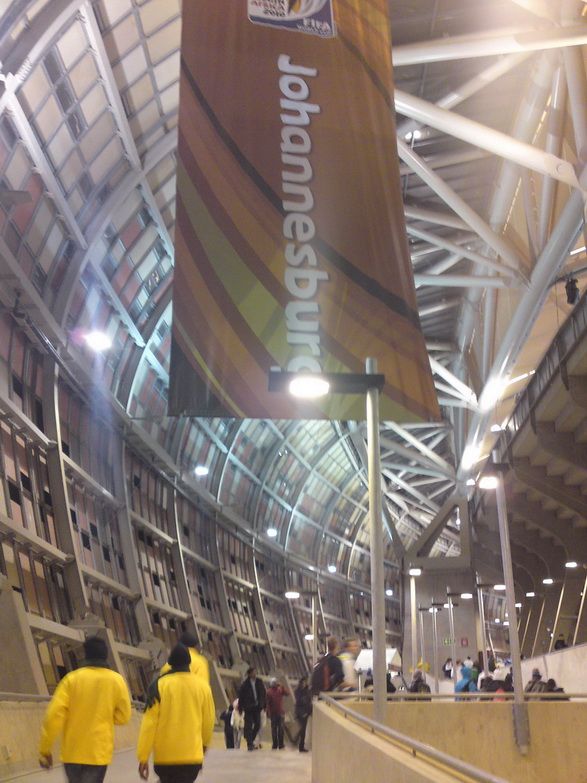
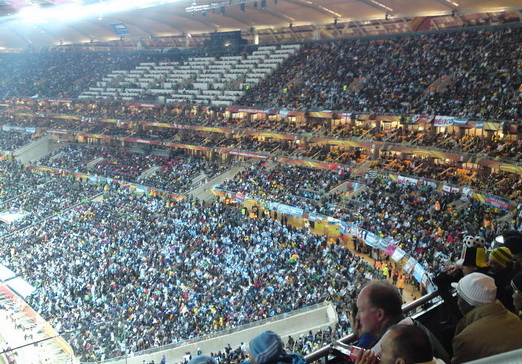
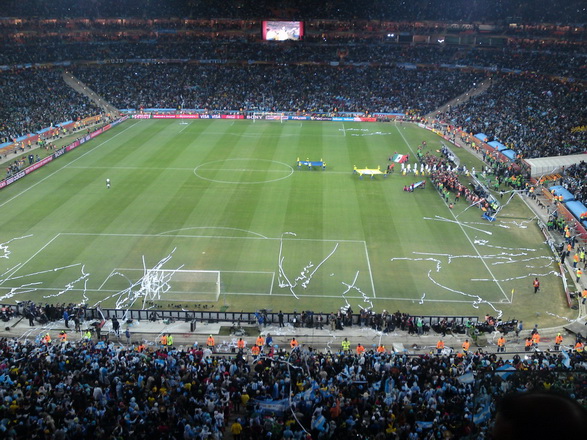
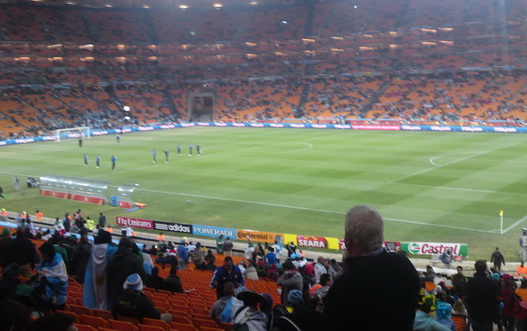
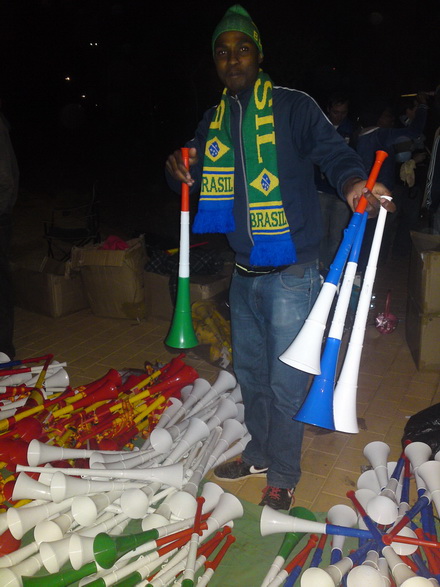
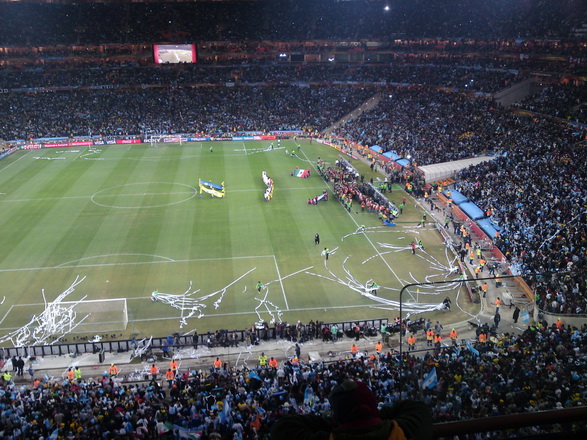
June 30th, 2010 at 11:01 am
Always enjoy…
I too couldn’t believe the amount of toilets, how clean they were, the fact that I didn’t have to queue AND the toilet paper wasn’t that awful grey single ply stuff! Perhaps they saved that for the ‘soccer streamers’…now there’s a branding idea!
June 30th, 2010 at 1:31 pm
LOL – could be a winning idea! Great that so many positive experiences have come from the World Cup, isn’t it?